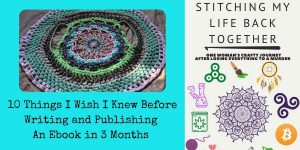Save Money by Going Green
One of the most striking aspects of cultivating a homestead is the long-term cost benefits associated with living a green lifestyle. Recently, one study found that vegetarians save an average of $750 per year on groceries, while another suggested that most solar panels pay themselves off within the first 8 years. The economics of saving by living sustainably vary for each family, but in general, there are some practical considerations to take into account when you rethink the ways a green homestead can help you financially in the long term.
More From the Homestead Guru: How to Clean And Maintain Your Yard With Zero Fossil Fuels
A Tiny Homestead
There are an inexhaustible number of ways to make your homestead more economically practical by cutting down on size. Tiny homes, on average, cost between $30,000 and $40,000 depending on the region: but the long-term savings of a tiny home means that eco homeowners save monthly on utility bills while their property appreciates in value over time. Even nontraditional tiny homes have cost-saving benefits. For instance, residents of manufactured or mobile homes may be able to tap into their home equity as a means of making their tiny homestead more financially manageable.
Decluttering To Save Living Space
Cultivating a sustainable homestead extends well beyond daily recycling. Emerging studies suggest that excess clutter actually costs money and reduces living space. This is because excess clutter detracts from the amount of your living space that you can use gainfully, costing you room to breathe. To live fruitfully, it’s important to rethink the purpose behind everyday objects in your life. Donating or repurposing unwanted items will take some of the burden off of running a homestead as you shed the baggage associated with
More from the Homestead Guru: This 10 Term Congressman Went Off Grid to Prepare for Doomsday
End Fast Fashion
The phenomenon of environmentally-hazardous fast fashion applies not only to clothes, but also to home goods, toys, decorations, and other everyday objects that accumulate in our homesteads over time. Of course, the biggest way to end fast fashion is to buy less, and to shop secondhand when you need to purchase goods. But you can also cultivate a more durable lifestyle in your family by teaching your children to prize their possessions, rather than pine for the next new toy.
It takes time to unlearn the natural instincts to over-buy and over-prepare when cultivating a new home. But through practice, you can save your family hard-earned money by choosing to do less and making long-term decisions that reduce your homestead’s environmental footprint.




